ISSN ONLINE(2319-8753)PRINT(2347-6710)
ISSN ONLINE(2319-8753)PRINT(2347-6710)
Dr.C.N.Chandrappa1, Dr.M.H.Annaiah2, PhaniBhushan.M.V3
|
| Related article at Pubmed, Scholar Google |
Visit for more related articles at International Journal of Innovative Research in Science, Engineering and Technology
Welding is a process of joining similar metals by the application of heat and pressure. Welding process is used commonly to get the advanced properties of the metals like Mild steel, Aluminum, Copper, Magnesium etc. Among these metals Magnesium has the lowest density (1.78 g/cm3) and it has good mechanical properties like high strength to weight ratio, good damping capacity, and good corrosion resistant compared to Mild steel. But Magnesium is highly flammable which requires gas shielding to prevent the oxidation, which forms Magnesium oxide, an undesirable compound. Friction Stir Welding, a Solid State Welding process uses the heat developed by the rotating tool, due to the friction the heat developed is used to join the metals, where the weld zone temperature zone is comparatively lower than conventional welding .The retention of the mechanical characteristics is achieved in FSW process. But problems in FSW like Pin, Tunnel and Flash defects are produced in weld zone. These problems and Weld quality, microstructure, mechanical characteristics of the weld zone can be controlled by varying the FSW parameters such as Tool rotational speed, Tool traverse speed, Tool Axial force, Tool shoulder to tool pin diameter ratio, tool profile etc. In this project we are going to study the effects of these parameters in Friction Stir Welding of Magnesium alloys.
Keywords |
| Friction Stir Welding, Tool traverse speed, Tool Axial Force, Tool shoulder to tool pin diameter ratio. |
INTRODUCTION |
| Magnesium is sixth abundant material in nature. It is the potential candidates to replace the aluminum alloys in many structural applications owing to some of their own unique properties. Normally, magnesium has the poor corrosion resistance. To increase the corrosion resistance zinc and aluminum is added in the magnesium. It is considered as a advanced materials in terms of energy and environmental pollution. |
| Constituents of AZ31B alloys |
| Al - 2.5 - 3.5% |
| Zn - 0.7 - 1.3% |
| Mn - 0.2 – 1.0% |
| Mg - balance% |
| Mg alloys are having low melting temperature around 6500c.in the conventional Welding process the mg material is melted and solidified. In the time of melting the proper gas shielding is required because the Magnesium oxide is having explosive in nature. So the magnesium alloys have to be welded without reaching the melting temperature. Problems in Conventional Welding were: Hot Cracking .Wide range of Heat Affected Zone, Retention of parent Metal Property is less, the emission of welding is causes to environment and operator also, the proper Gas Shielding is required. |
| Friction stir welding process consists of a non consumable rotating tool specially designed pin and inserted into the butting edges of the sheets to be joined and subsequently traversed along the line. The rotating tool not only provides the heat but also provides other functions like movement of the material to form the joint and contaminant of the molten metal beneath the shoulder pin. As the pin rotates between the butting edges it leads to the localized heating effect, which soften the material from the front to the back of the pin thus filling the tool moves forward. The tool shoulder restricts the metal flow to the shoulder position i.e. initially to the top surface of the work. Like other type of welding FSW have also different weld zones which are Parent Metal, Heat Affected zone, Thermo mechanically affected zone, Weld nugget. Defects in Friction Stir Welding are Pin, Flash, and Tunnel. The study was carried out on these problems and Weld quality, microstructure, mechanical characteristics of the weld zone can be controlled by varying the FSW parameters such as Tool rotational speed, Tool traverse speed, Tool Axial force, Tool shoulder to tool pin diameter ratio, tool profile etc. |
EXPERIMENTAL WORKS |
| Magnesium sheet of size 200x100x3 (mm) were chosen for the welding process. These sheets were cut to 66x66x3 (mm) plates 27 in number.27 sheets were cut according to the number of experiments found by design of experiments using Minitab software. FSW Parameters were found using full factorial method with 3 factors the numbers of experiments to be conducted were found. The three factors were Tool Rotational speed (rpm), Tool feed (mm/min) and axial force (kN). The range of these parameters are given below |
| Tool Rotational speed : 800-1200 rpm |
| Tool feed : 40-120 mm/min |
| Axial force : 8-12 kN |
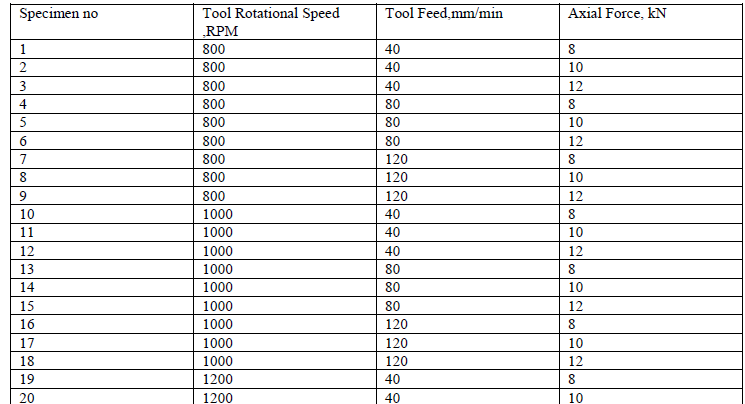 |
 |
| After getting the above results using the above parameters the respective specimens were friction stir welded based on their respective parameters. Friction stir welding of the plates were done in Anna University, Guindy, Chennai. |
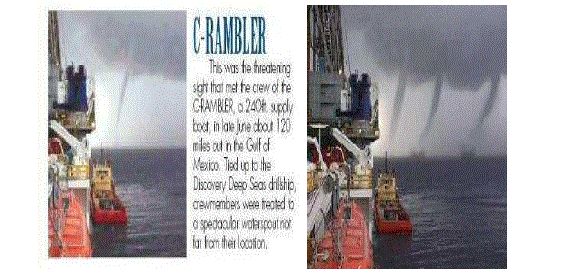 |
| After the FSW process the Welded specimens were cut using axe saw blade into small pieces in order to carry out Micro-Hardness survey (Vickers’s) .These pieces were molded in a compression molding machine and then later hardness survey was carried out for 27 specimens in both horizontal and vertical direction. After the micro-hardness survey the moulds are once again polished well in order to remove the indentation. Now these moulds are etched inorder to get the weld zone. 10 % of Picrol or Picric Acid is mixed in absolute Ethyl Alcohol. 3 ml of Acetic acid and 2 ml Hydrogen peroxide is added to the mixture. Acetic acid is responsible to obtain a blood red colour which produces the etched zone. The solution is yellowish in colour; using glass rod wound with sponge is dipped in the solution and gently coated on the metal in the mould. Coating is done 3-4 times , finally the mould is washed in distilled water. |
| After etching procedure the moulds are taken to the microscope where the microstructure photos were taken at 150 x. Later Macroscopic study was carried out , the procedure was similar to that of the microstructure procedure where the moulds are etched darker. The moulds are dipped in acetic solution well. As a result increased etching takes place; hence clear weld zone is obtained. After the etching procedure the macrostructure photos are taken at 1x . |
Results |
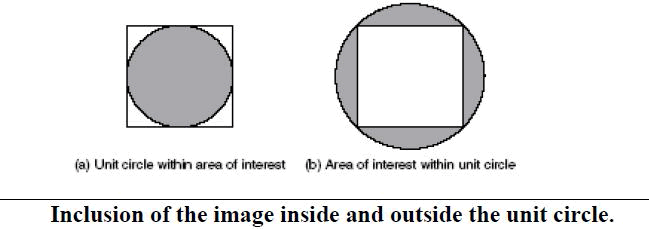 |
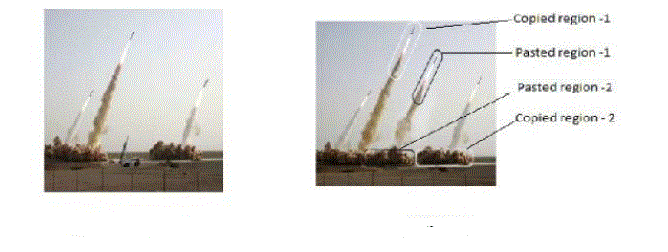 |
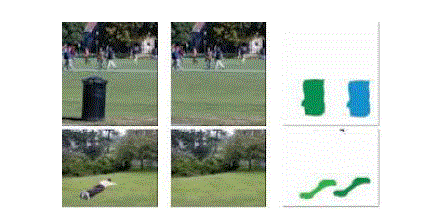 |
| The hardness of the parent metal was found to 68.6 hv.The weld parameters 1200 rpm, 120 mm/min, 12 kN had higher hardness value 77.6 hv .The hardness along the vertical direction increased from top to bottom towards stir zone and then decreased at the parent metal. The elongated and deformed grains were observed in the TMAZ region. This may be due to insufficient deformation strain and thermal exposure of this region. This region is located 3 to 4 mm away from the weld center, where the hardness is low |
CONCLUSION |
| The nugget region of FSW joint contains very fine, equiaxial grains and this may be due to the dynamic recrystallization that occurred during FSW process. Optimum level of heat generation, formation of finer grains, and higher hardness are the main reasons for the superior tensile properties of these joints. There are two main reasons for the improved hardness of stir zone the grain size of stir zone is much finer than that of base metal, grain refinement plays an important role in material strengthening. Higher rotational speeds produced uniform , equiaxial grains. Deformed elongated grains were formed at thermo-mechanically heat affected zone. Secondly, the small particles of intermetallic compounds are also a benefit to hardness improvement |
References |
|